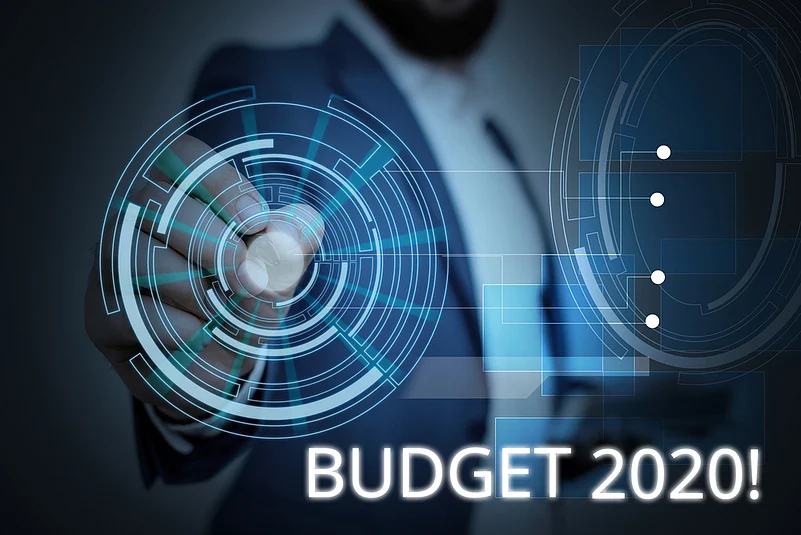As India braces itself for its maiden mega financial event – Union Budget 2020, all eyes are on Finance Minister Nirmala Sitharaman on February 1, 2020, when she tables her second Budget in the Parliament.
The Budget comes at a time when the Indian economy is facing a severe slowdown, with GDP dropping to 4.5 per cent in the July-September quarter of 2019-20. With five back-to-back quarters of lower economic growth, the dream to achieve a $5 trillion economy by 2024 will take a Herculean effort.
Need for focussed efforts between policymakers and stakeholders
The Government, facing challenges on domestic and international fronts, is well-aware of the gravity of the task in the hands, and has called for focussed efforts between policymakers and stakeholders to achieve its target.
Advertisement
The efforts are required to resist slump of the core sectors of the economy, boost consumption and fillip investments.
Key focus areas of the Budget
While Budget 2020 gives the opportunity to prepare a roadmap for the ambitious $5 trillion economy, to do so, one of the key focus areas should be to revive the auto sector. The sector that contributed 7.5 per cent to the country’s GDP in 2018-19 had a forgettable 2019.
Car sales in the country plummeted by a whopping 19 per cent last year as per the Society of Indian Automobile Manufacturers (SIAM), with sales expected to remain flat in the current fiscal on the back of weak demand and implementation of tighter emission norms, pushing up prices.
Advertisement
The slump in the sector has been a topic of much debate, and Budget 2020 should come up with measures that address this issue. An impetus to the auto sector, on similar lines like the real estate sector, will go a long way in bringing back the much-needed confidence of buyers and manufacturers, lifting the sagging economy in the process.
It’s noteworthy that the Government set up a Rs 25,000 crore alternative investment fund (AIF) last year for the struggling real estate sector and ensure timely delivery of homes to buyers.
Another key area of focus in the upcoming budget would be tackling the credit crisis faced, particularly by non-banking financial companies (NBFCs). Post the IL&FS blowout in late 2018 coupled with credit rating downgrades created a liquidity crisis for the sector with fund managers facing massive redemption requests.
Given that NBFCs contribute to almost 20 per cent of the total credit in India, the liquidity stress in the sector doesn’t augur well for the economy, particularly for small and mid-sized businesses (SMEs), who depend on these alternate lenders for procurement of funds. Hence, the Budget should not only address this major woo, but also make provisions for streamlining the flow of money in the sector.
Another key area of focus would be to plug the loopholes in Goods and Services Tax (GST). Ever since its rollout from July 1, 2017, GST has been under the scanner with the GST Council coming up with many changes to ensure that it strikes a chord with everyone. However, GST collections have remained muted over several months, putting pressure on the government exchequer.
Advertisement
It’s highly unlikely for GST collections to improve in the next few months and in the coming fiscal. According to estimates, the government may fall short of Rs. 50,000 crore in its GST collection from its target in this fiscal. Even after several amendments, GST compliance still remains a challenge for businesses and therefore, the FM needs to come up with solutions that make GST compliance easy and simplified.
A simplified GST, with a cut in GST across all rates, would be a win-win situation for both parties. Not only will it allow more businesses to file their GST returns with ease, but also ensure the coffers of the Government are filled with the desired amount.
Advertisement
Areas of focus for the common man
For the common man, the first focus after any Budget is the income tax rate slabs and this will be no different. There are anticipations that following the cut in corporate tax, income tax slabs could see a major rejig.
The Akhilesh Ranjan taskforce set up to come up with suggestions on overhauling the personal Income Tax has submitted its report on the new Direct Taxes Code to the government, which is yet to be made public. If news reports are to be believed then sweeping changes have been proposed, with the major change being the widening of the tax slabs.
Advertisement
To boost consumption, there could be a cut in income tax rates. However, in case people don’t spend the extra money, the same can affect the government’s spending capacity, halting many projects and schemes in the process.
It must be noted that though the cut in corporate tax from 30 per cent to 22 per cent saw a jump in companies’ profits by 11 per cent in the June-September 2019 quarter, the extra money is yet to find its way on the ground. Thus, the FM has a fine balancing act to pull off where if taxes are deducted, provisions should be made to ensure that the same doesn’t overburden the government’s exchequer.
Advertisement
Summing it up
While challenges galore, the Union Budget 2020 gives the opportunity for the government to announce measures to revive demand in a faltering economy. It’s imperative to come out with the strong fiscal measures that can pay dividends in the future and consolidate the country’s economic growth in the days to come.
The author is Head, Personal Wealth Advisory, Edelweiss















 Just one email a week
Just one email a week